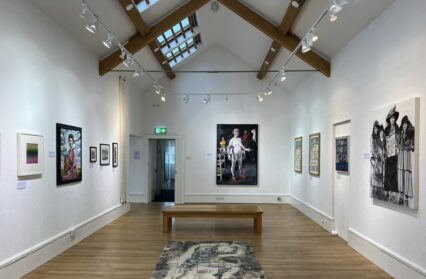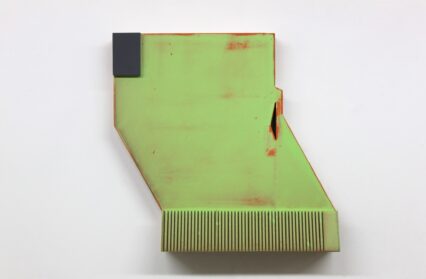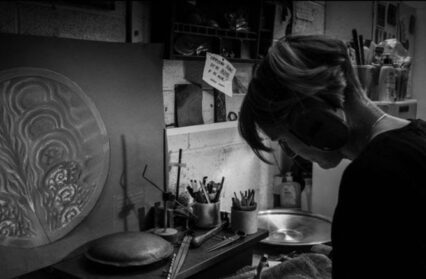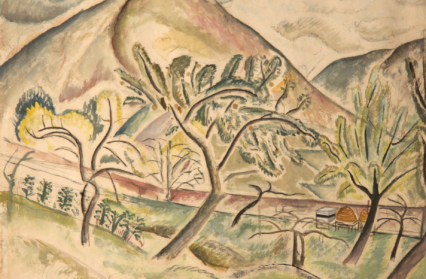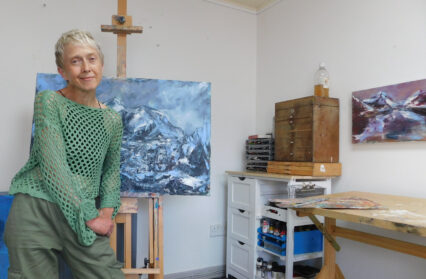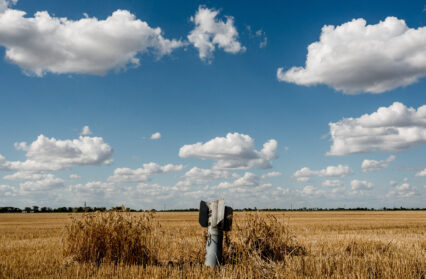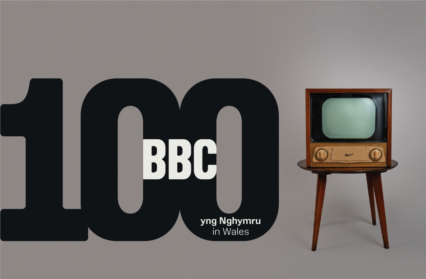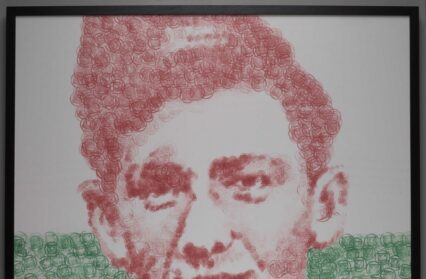All this week we’re marking this year’s International Women’s Day with a focus on the work of women in the arts in Wales, to coincide with this year’s call to “Embrace Equity”. We start with a look inside an exhibition currently on display at MOMA Machynlleth commemorating the centenary of the Women of Wales’ Peace Appeal of 1923-24 with an exhibition called PAX, which is showing until April 15th 2023. Some of the big names in Welsh contemporary art are exhibiting across a wide variety of media – painting, printing, photography, video and sculpture. Candy Bedworth went along to see it.
Heledd Wyn, exhibition curator, explained to Wales Arts Review that PAX is about celebrating the remarkable efforts of the Peace Appeal, with contemporary Welsh artists offering a response to the theme of peace. She said that art is an extraordinarily powerful tool, and an important medium for reflection, and PAX was sharing a message of peace to all visitors.
The Women of Wales’ Peace Appeal was an astonishing campaign, which involved almost every household in Wales, culminating in a two month ‘Peace Tour’ to women’s organisations across the USA. Seven miles of appeal papers were toured in an oak chest, and in the end over 60 million people were involved. What is most surprising though, is that so few people know about it. Resonating as much today as it did 100 years ago, this ‘lost story’ is one we should all re-visit.
Following the First World War, thousands of ordinary women across Wales signed a peace petition, imploring the women of America to join them in striving for a world without war. These women wanted nothing less than a social revolution, and a peaceful planet. They collected names on petitions and formed committees. It is estimated that 60% of the women of Wales (almost 400,000) signed the petition – an amazing achievement! These peace pilgrims then went over to the USA, to talk directly to their American sisters and the president, Calvin Coolidge, urging them to join the League of Nations.
Where did this up-swelling of action come from? And why Wales? Welsh non-conformist chapel life has a history of pacifism, and so many small communities were devastated by losing family members in the First World War. Some say that women were confronted abruptly by the loss of their traditional roles as carers and home-makers as communities were disrupted by the loss of sons, husbands, brothers and fathers to take care of. But this was not just women wanting to protect traditional family values. This was also the keening of a Käthe Kollwitz Pietà, the mourning mother cradling her dead child. These were women who knew the true cost of the injustice and inhumanity of war.
The PAX exhibition contains a cross section of documentary, abstract and symbolic art. Some artists, such as Meinir Mathias have chosen to directly depict Annie-Jane Hughes Griffiths, the Chair of the original Women’s Peace Appeal. This stirring oil on canvas portrait is a cornerstone of the exhibition. One the strongest (and largest) canvases is by Shani Rhys James. Her naked Self-Portrait, with red shoes, shows the strength and vulnerability of a woman and it is impossible not to have a visceral response to this image.
The floor space is dominated by a huge raku fired clay ceramic work called Byth Eto by Meri Wells. In a corner, Washing By Moonlight by Flora McLachlan is like a drink of cool mountain water. We almost feel like we are spying on this woodland bathing scene, but the sexualising male gaze is absent – this is a figure completely and unselfconsciously immersed in her environment and her pleasure.
After high-profile national and international discussions around the problem of female artists being given the gallery space they deserve, this is an ideal opportunity to view some incredible Welsh women artists. I admit I had expected to find an all-female response to an all-female Peace campaign, but there are a handful of male artists here. Both Elfyn Lewis and Ian Phillips have contributed personal meditations on peace in nature and landscape. And Iwan Bala, whose work has frequently explored themes of politics, conflict and resistance has two pieces exhibited: Tybed and Tyfiant. A Seren Morgan Jones or a Sarah Williams would have been interesting additions, but with almost 30 works here, there is something for everyone.
The Bridge is a difficult space to fill, it is literally a corridor between two gallery areas, but curator Heledd Wyn has allowed smaller, more intimate images to take centre stage here. This is a space to pause, listen to video/audio, and get up close and personal with works by artists like Ruth Jen Evans and poems by writers like Ness Owen and Sian Northey. The poems might have been better served if they were in a larger font size (and white paper on white walls felt a little bare). We end on a photograph from the period which gives us a real sense of these early peace pioneers – this could be your great-grandmother. Annie Morgan Suganami recreates the photograph in a mixed media work called Y Menywod.
I talked to Elin Crowley, whose Cymru Dros Heddwch monoprint/collage is the first piece the visitor encounters on entering the main exhibition:
“I was honoured to be invited to exhibit as part of the centenary, and to create something to represent the message of these inspirational Welsh women. The bird in my work represents freedom, flying from East to West towards the U.S, and the many threads in the wings represent union and togetherness. I used a collage to create the bird, a bird I imagined containing the voices of so many colourful characters who shared a passion and commitment for peace. Learning more about the peace appeal has been fascinating and I think it should be celebrated. It definitely makes me proud to be Welsh knowing we are a nation devoted to peace.”
Today, the Heddwch Nain Mam-gu (Grandmothers’ Peace) project continues to ask important questions about peace in our time, calling for ‘the peace our grandmothers wanted’. Take a tour of PAX and consider what peace means to you.
PAX runs until 15th April 2024 in the Owen Owen Gallery and The Bridge at MOMA Machynlleth, SY20 8AJ.


